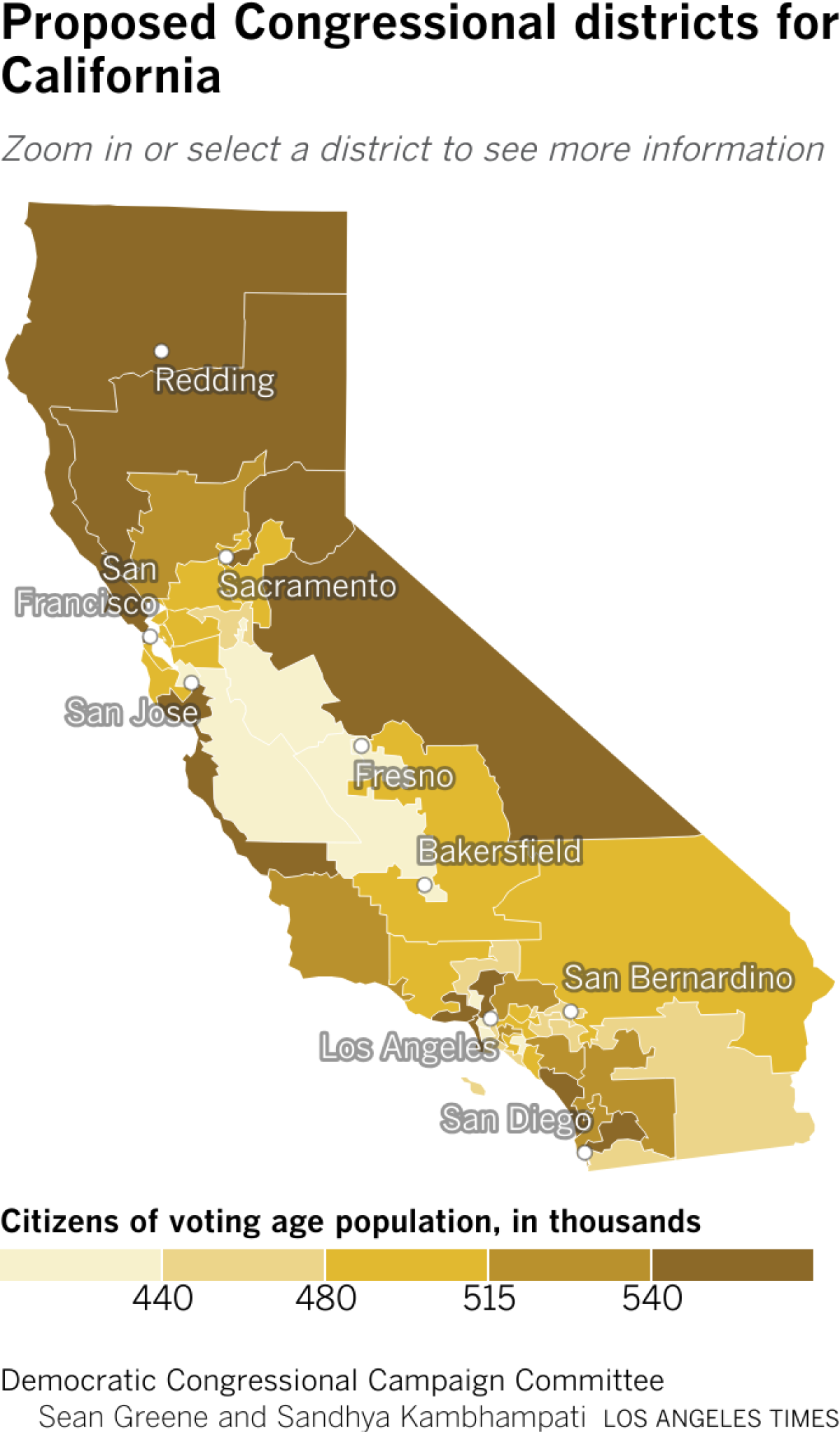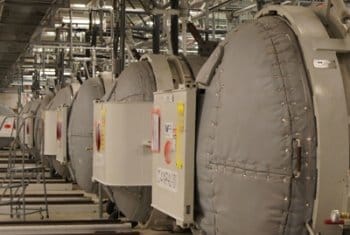As Prop. 50 fight intensifies, Newsom and others rally their base
The multimillion-dollar jousting over redrawing California’s congressional districts to boost Democrats and counter President Trump was on full display in recent days, as both sides courted voters less than a month before ballots begin arriving in mailboxes.
Gov. Gavin Newsom, national Democratic leaders including Sen. Elizabeth Warren (D-Mass.) and a slew of political influencers held an hours-long virtual rally Tuesday afternoon, urging Californians to support Proposition 50 in the Nov. 4 special election. Speakers framed the stakes of the ballot measure as nothing short of existential — not just for Democratic interests, but also for democracy.
“It’s all at stake. This is a profound and consequential moment in American history. We can lose this republic if we do not assert ourselves and stand tall at this moment and stand guard to this republic and our democracy. I feel that in my bones,” Newsom said Tuesday afternoon.
If passed, Proposition 50 would gerrymander the state’s congressional districts to favor Democrats, bolstering the fates of several Democrats in vulnerable swing districts and potentially cost Republicans up to five House seats.
California’s congressional districts are drawn by a voter-approved independent commission once a decade after the U.S. census. But Newsom and other state Democrats proposed a rare mid-decade redrawing of the districts to increase the number of Democrats in Congress in response to similar efforts in GOP-led states, notably Texas.
Tuesday’s virtual rally, which was emceed by progressive influencer Brian Tyler Cohen, was a cross between an old-school money-raising telethon and new media streaming session. Popular podcasters and YouTubers such as Crooked Media’s Jon Favreau and Tommy Vietor (alumni of former President Obama’s administration), Ben Meiselas of MeidasTouch and David Pakman shared the screen with political leaders, with an on-screen fundraising thermometer inching higher throughout.
Cohen argued that people like him had been “begging” Democrats to fight Trump. And now elected officials had done their part by getting Proposition 50 on the ballot, he said, urging viewers to donate to support the effort.
Warren argued that Trump was a “would-be king” — but if Democrats could retake control of either house of Congress, that would be stopped, she posited.
“And if we have both houses under Democratic control,” Warren continued, “now we are truly back in the game in terms of making our Constitution work again.”
The exhaustive list of speakers represented the spectrum of the modern left, with standard-bearers such as Rep. Jamie Raskin (D-Md.) and House Minority Leader Hakeem Jeffries of New York, alongside rising stars including Reps. Jasmine Crockett (D-Texas) and Maxwell Frost (D-Fla.). A number of California delegates, including Sen. Alex Padilla and Reps. Ted. Lieu, Robert Garcia, Pete Aguilar, Jimmy Gomez and Sydney Kamlager-Dove, also spoke.
The event had been scheduled to take place Sept. 10 but was postponed after the assassination of conservative activist Charlie Kirk earlier that day.
Jessica Millan Patterson, the former leader of the California Republican Party and chair of an anti-Proposition 50 committee, accused Newsom of “scrambling for out-of-touch messengers to sell his scheme.”
“For Gavin Newsom, it’s all distraction and deflection. Instead of addressing the $283 million price tag taxpayers are stuck with for his partisan power grab, he’s hosting a cringeworthy webinar packed with DC politicians, out-of-state influencers, and irrelevant podcasters, all lining up to applaud his gerrymandered maps,” Millan Patterson said in a statement Tuesday.
Former Gov. Arnold Schwarzenegger, who championed the creation of the independent redistricting commission while in office and has campaigned to stop gerrymandering across the nation after his term ended, forcefully denounced Proposition 50 on Monday.
“They are trying to fight for democracy by getting rid of the democratic principles of California,” Schwarzenegger told hundreds of students at an event celebrating democracy at the University of Southern California. “It is insane to let that happen.”
The former governor, a Trump foe who has prioritized good governance at his institute at USC, said the effort to dismantle the independent commission’s congressional districts to counter Trump are anti-democratic.
“They want to get rid of it under the auspices of we have to fight Trump,” Schwarzenegger said. “It doesn’t make any sense to me because we have to fight Trump, [yet] we become Trump.”
And on the morning of Sept. 10, opponents of the ballot measure rallied in Orange County, speaking about how redrawing congressional districts would dilute the voice of communities around the state.
“We’re here because Prop. 50 poses a serious threat to Orange County’s voice, to our communities and to our taxpayers. This measure is not about fairness. It’s about power grab,” said Orange County Supervisor Janet Nguyen during a rally at the Asian Garden Mall in Little Saigon, a Vietnamese hub in Westminster. “And it comes at the expense of our taxpayers, our small businesses and our minority communities.”
She noted that Little Saigon would be grouped with Norwalk in Los Angeles County if the ballot measure passes.
“Ask anybody in this area if they even know where Norwalk is,” Nguyen said.



